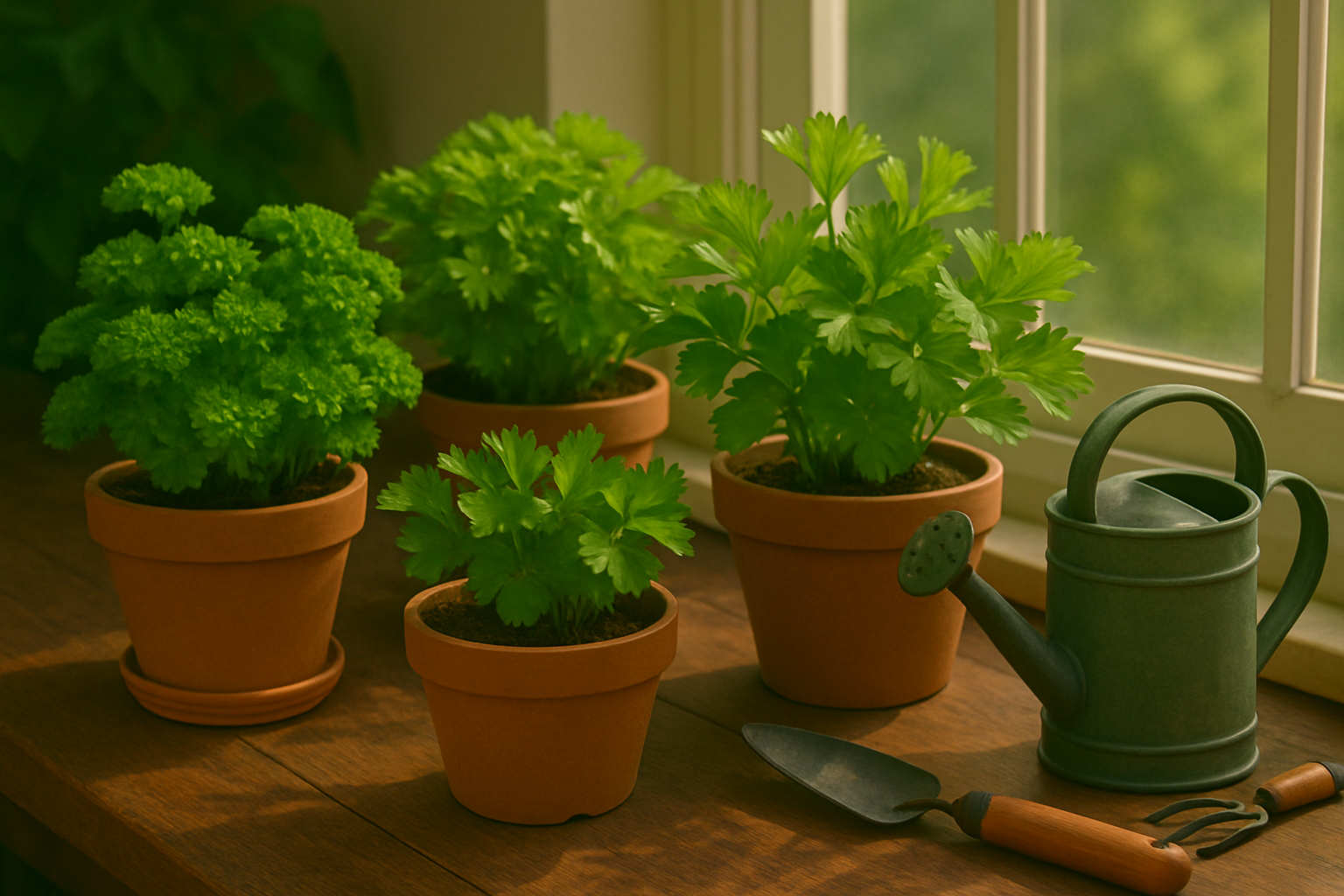Why Grow Parsley at Home?
Growing parsley at home is a smart move for both your kitchen and your well-being. This vibrant herb is a culinary staple, adding fresh, zesty flavor to everything from salads and soups to pestos and marinades. But parsley isn’t just about taste; it’s packed with vitamin C, vitamin K, antioxidants, and essential minerals like iron, making it a powerful addition to a healthy diet.
One of the best things about parsley is how easy it is to grow—even if you’re short on space or new to gardening. Parsley thrives happily in pots on a sunny windowsill, a small balcony, or tucked into a corner of your garden bed. It’s a hardy herb that doesn’t require much fuss: regular watering and the occasional trim will keep it lush and productive for months.
Best of all, growing your own parsley pays off quickly. Instead of buying plastic-wrapped bunches that wilt in your fridge, you can snip what you need on demand, saving money and reducing waste. Never worry about running out mid-recipe again—your own parsley plant means you’ll have a fresh, flavorful supply at your fingertips whenever inspiration strikes.
Choosing the Right Parsley Variety
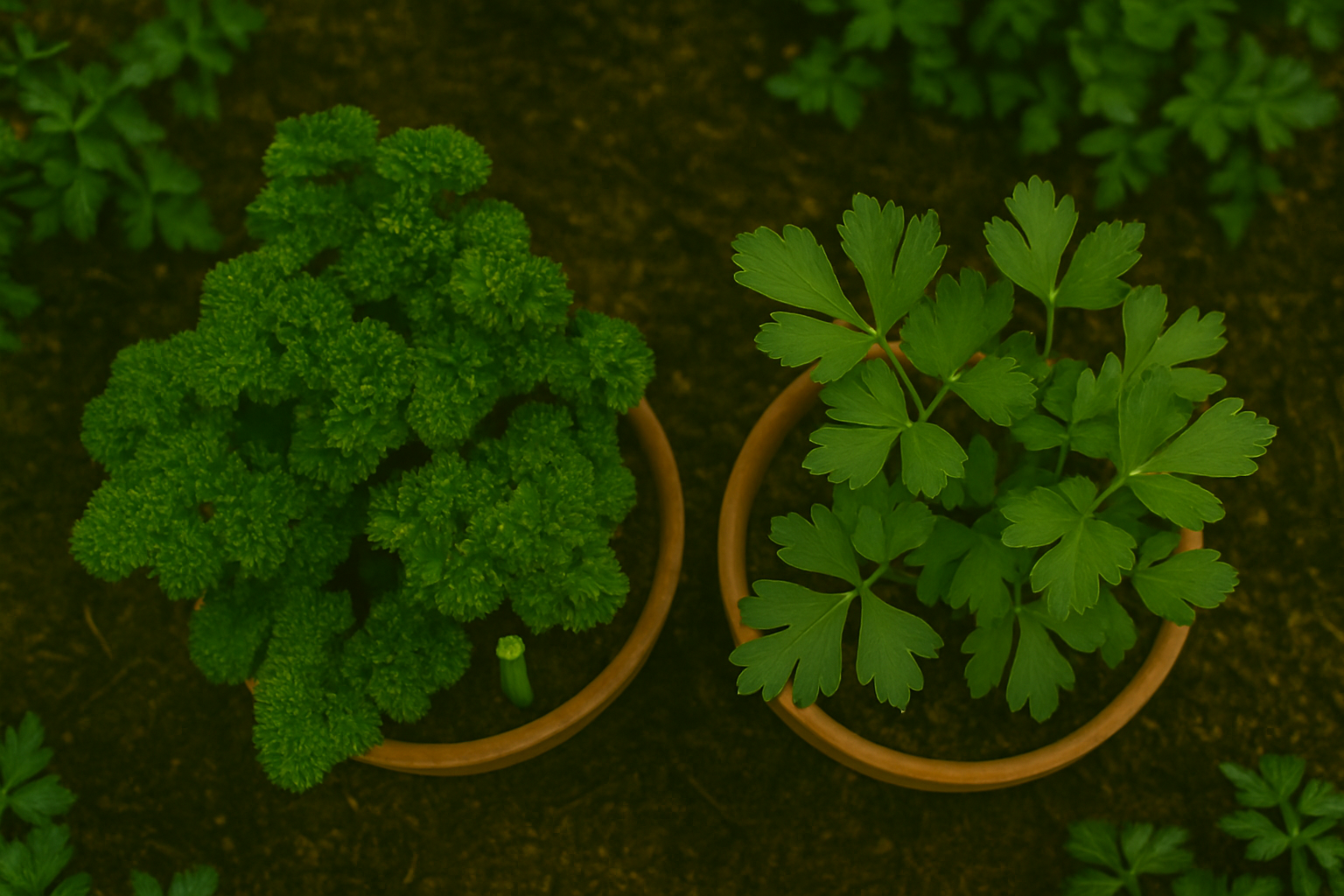
When it comes to parsley, the two main varieties you’ll encounter are curly parsley and flat-leaf (Italian) parsley—each offering distinct advantages. Curly parsley, with its ruffled, bright green leaves, is often used as a decorative garnish on plates, lending vibrant color and texture. Its flavor is milder and slightly grassy, making it a good fit for dishes where you want a subtle herbal note without overpowering other ingredients.
On the other hand, flat-leaf parsley boasts broader, flat leaves and a stronger, more robust flavor that shines in cooked dishes, salads, and sauces—chefs favor it for its consistent taste and ease of chopping. If you’re after a more intense parsley aroma in chimichurri, tabbouleh, or gremolata, flat-leaf is the better pick.
While these two dominate kitchens worldwide, you might also come across lesser-known varieties like Hamburg parsley, grown for its turnip-like edible root, or Japanese parsley (mitsuba), valued for its unique flavor in Asian cuisine.
For sourcing seeds or seedlings, check local nurseries and farmers’ markets for seasonally fresh options, often adapted to your region’s climate. If you shop online, reputable seed companies like Baker Creek, Johnny’s Selected Seeds, or your favorite gardening retailer offer a wider variety and ship to most locations. Look for organic or heirloom seeds to diversify your herb garden, and always review customer ratings to ensure quality and germination success.
With so many options, you can experiment to discover which parsley variety best suits your taste and culinary needs.
Preparing for Planting (Soil & Location Basics)
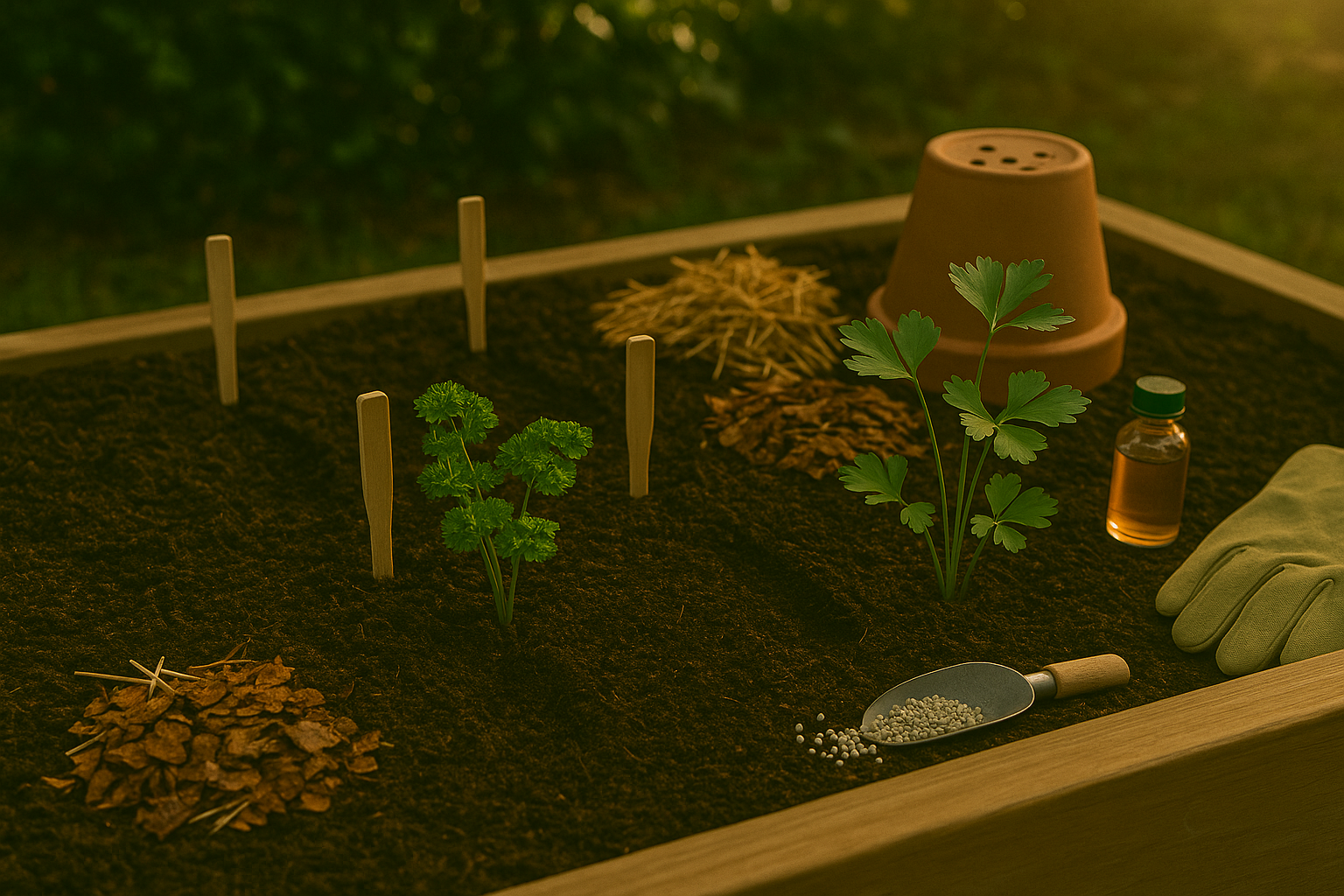
Getting your plants off to a healthy start begins with the right soil and location. Aim for well-drained, fertile soil—think rich, crumbly texture that doesn’t hold too much water but retains enough moisture for roots. Your ideal soil pH depends on the plant, but most common veggies and flowers thrive around a neutral range (pH 6.0–7.0).
Before planting, dig in plenty of compost or well-rotted manure to boost nutrients and improve soil structure; this encourages good drainage and helps roots grow strong.
Choose your growing location based on the plant’s sunlight needs—most edibles and many ornamentals want at least six hours of direct sunlight daily, so scout spots that get plenty of morning or afternoon sun.
Traditional garden beds are perfect if you have yard space and manageable soil; for smaller areas or poor ground, raised beds or large containers work well—just be sure pots have drainage holes to prevent soggy roots. Indoors, position containers near south or west-facing windows for maximum light (or use a grow light if needed), and select lightweight potting mixes formulated for containers.
To check drainage, water the soil and watch how quickly it drains; it should be moist, not puddling or bone-dry. Mixing in a handful of perlite or sand can help heavy soils drain better, while mulching with straw or bark chips helps hold in moisture outside.
Focusing on these basics sets your plants up for a strong, productive growing season.
How to Sow and Plant Parsley
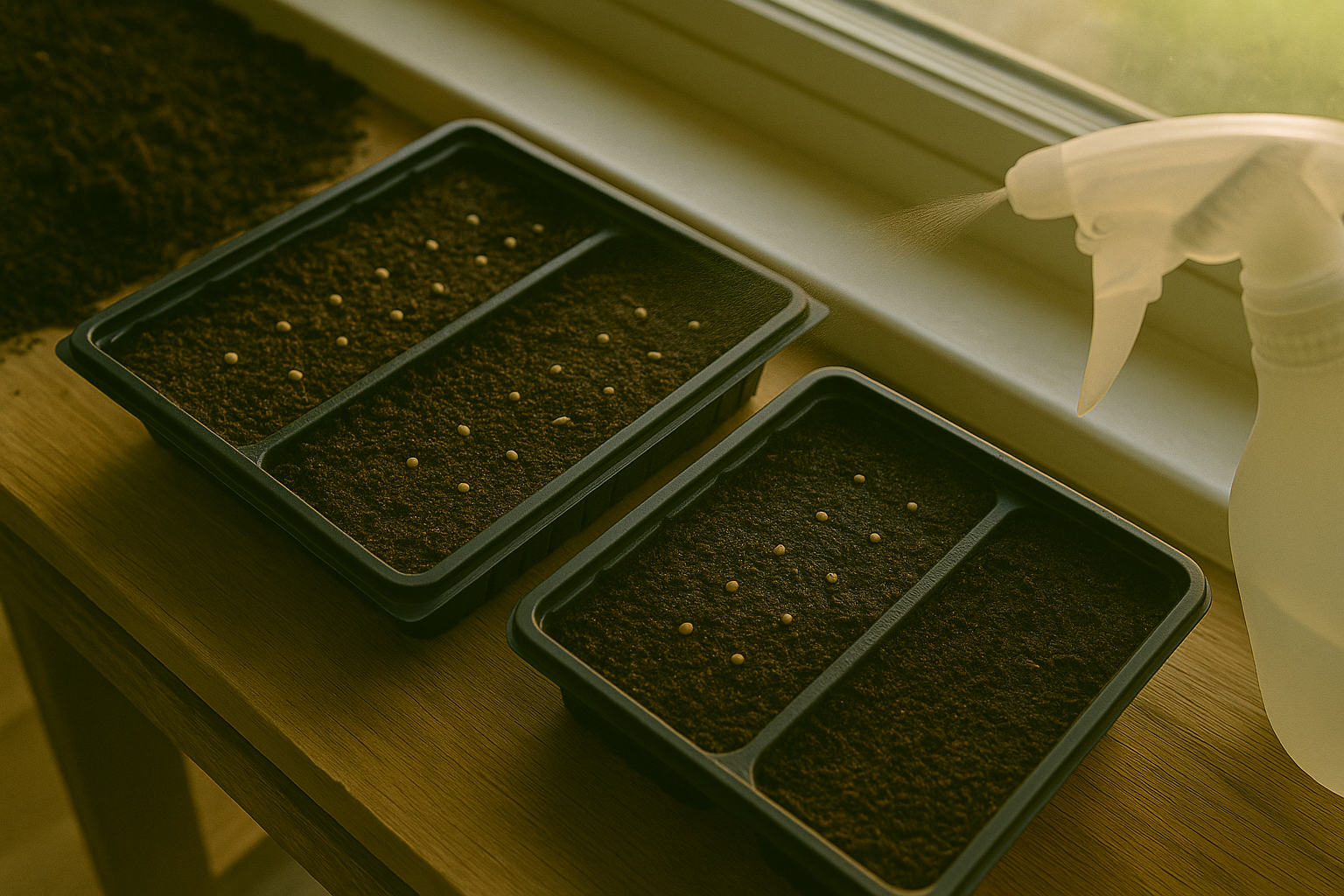
Starting parsley from seed can be rewarding but slow, so patience is key. For indoor sowing, begin 8-10 weeks before your last expected frost. Fill small pots or seed trays with quality seed-starting mix and moisten lightly.
Since parsley seeds have a tough coating, soak them in warm water for 24 hours before planting. This step can help speed up germination, which usually takes 2-4 weeks. Plant the seeds about 1/4 inch deep, cover with a thin layer of soil, and space them 1-2 inches apart. Use a gentle mist to keep the soil consistently moist, but avoid overwatering.
Place the trays on a sunny windowsill or under grow lights. Parsley prefers temperatures between 60-70°F (16-21°C) for best germination and growth. Once seedlings have at least two sets of true leaves and outdoor temperatures stay above 50°F (10°C) at night, harden them off by moving them outside for a few hours each day.
Direct Outdoor Sowing
For direct outdoor sowing, wait until all danger of frost has passed. Sow seeds 1/4 inch deep in rows 12 inches apart, then thin seedlings to 6-8 inches apart as they grow. Direct sowing avoids transplant shock, while indoor starting gives more control early on—especially in colder climates.
Tips for Success
- Monitor soil moisture carefully—never let it dry out, but avoid soggy conditions that can cause rot.
- Don’t get discouraged if sprouts don’t appear right away; parsley is known for slow germination.
- Mark your rows or pots clearly so you don’t mistake them for empty and disturb the seeds accidentally.
With careful attention and patience, your parsley patch will soon be thriving and ready to flavor your favorite dishes all season long.
Caring for Your Parsley Plant
Caring for your parsley plant is easy with a few simple habits. Water parsley regularly, keeping the soil consistently moist but never soggy. To check, stick your finger about an inch into the soil—if it feels dry, it’s time to water. In hot weather or indoors near heaters, check more often, as potted parsley tends to dry out faster than plants in the ground.
Mulching helps retain moisture and suppress weeds. Use a thin layer of straw, compost, or leaf mold, but keep the mulch clear of the stems to prevent rot. Feed your parsley monthly with a balanced liquid fertilizer, or scatter a small handful of slow-release organic fertilizer around outdoor plants at the start of the season.
For bushy, healthy growth, snip stems from the outside as needed. This encourages the plant to send out fresh shoots from the middle. Avoid removing more than a third of the plant at once. To prevent bolting (early flowering), which makes parsley bitter and ends its life cycle, keep the soil cool and moist, and harvest often.
If you notice any spent or yellowing stems, trim them at the base with scissors to keep the plant tidy and productive. Indoor plants may require more frequent watering and benefit from a sunny windowsill with some afternoon shade. For container-grown parsley, ensure good drainage—waterlogged roots can harm the plant.
Checking on your plant weekly, feeding lightly, and keeping it trimmed will help ensure lush, long-lasting harvests whether your parsley is growing indoors, outdoors, or in containers.
How and When to Harvest Parsley
Parsley is ready to harvest when its leaves are lush, rich green, and stand at least 4 to 6 inches tall—a sign that your plant is healthy and mature enough for picking. For the best flavor, harvest in the morning after the dew has dried. Always use clean scissors or garden shears to avoid damaging the plant.
Focus on cutting the outer stems first, snipping them at the base near the soil. This method encourages the inner leaves to keep growing, giving you a continuous supply throughout the season. Avoid cutting more than a third of the plant at once to ensure it remains vigorous.
Once you’ve picked your parsley, rinse the leaves gently and pat them dry. To keep it fresh for up to a week, store the stems in a glass of water in the fridge and cover loosely with a plastic bag. Alternatively, wrap the leaves in a damp paper towel, place them in a sealed container, and refrigerate.
If you have an abundant harvest, parsley freezes well—just chop and pack into ice cube trays with a bit of water or olive oil. For long-term storage, air-dry or dehydrate the leaves and keep them in an airtight jar to preserve their flavor for months.
Troubleshooting
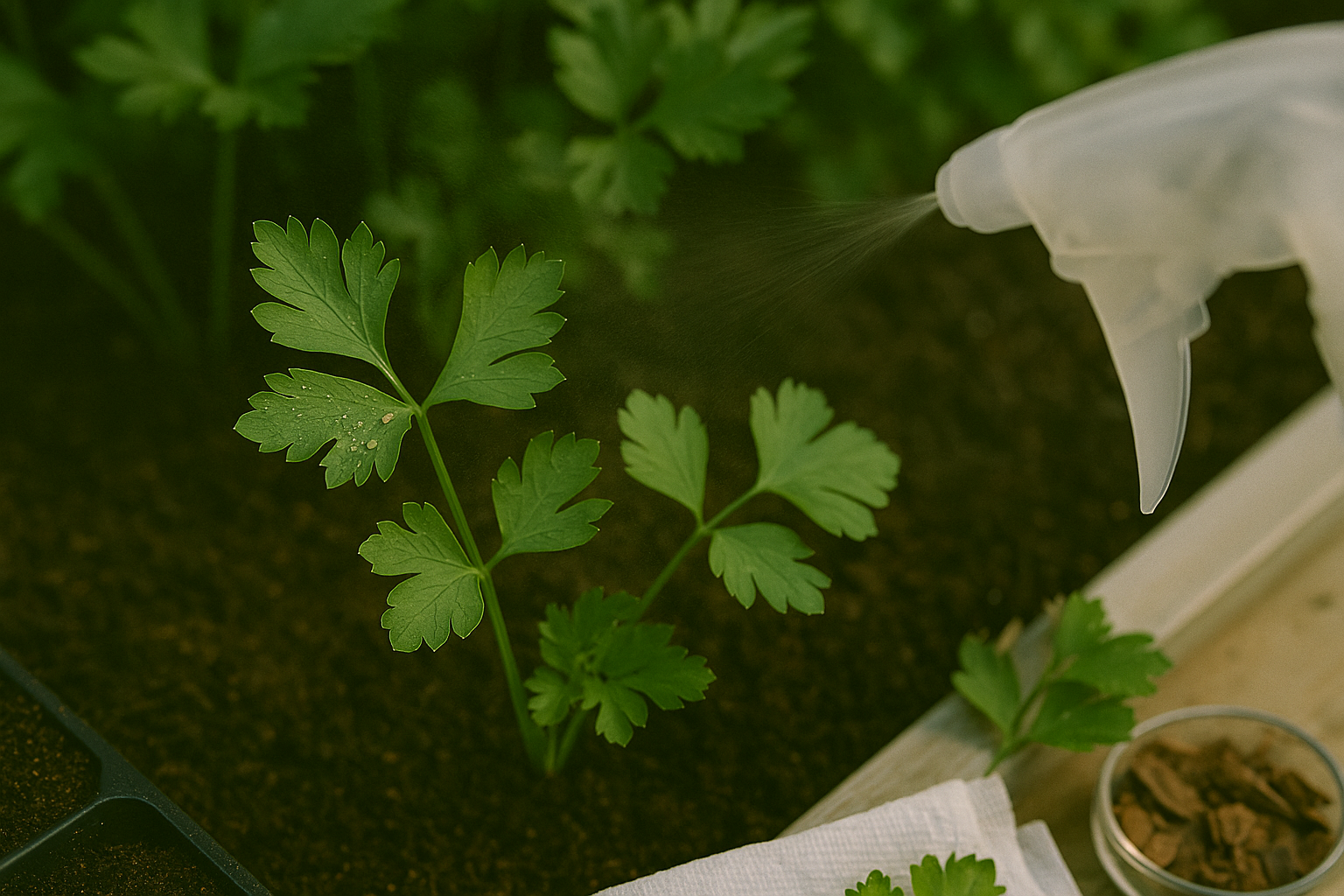
Growing parsley is usually smooth sailing, but even this hardy herb can run into a few bumps along the way. One common pest issue is aphids, which gather on leaves and suck out their juices, leaving plants weak. To get rid of aphids, spray the parsley with a mix of water and a few drops of mild dish soap, or blast them off with a hose.
Caterpillars may munch on leaves, too, but hand-picking them off early in the morning usually keeps damage under control. If you notice yellow leaves, don’t panic—this often indicates overwatering or soil that’s too soggy. Let the top inch of soil dry between waterings, and make sure your parsley pot or garden bed drains well.
Stunted growth can result from overcrowding, so always thin seedlings to about six inches apart for good airflow and space. Feeding parsley with a diluted fish emulsion or compost tea every month gives it a boost without harsh chemicals.
Remember, parsley is forgiving, and with a little observation and quick action, most problems can be solved easily. Beginners shouldn’t be discouraged—once you understand these simple fixes, parsley rewards you with lush growth all season long.
